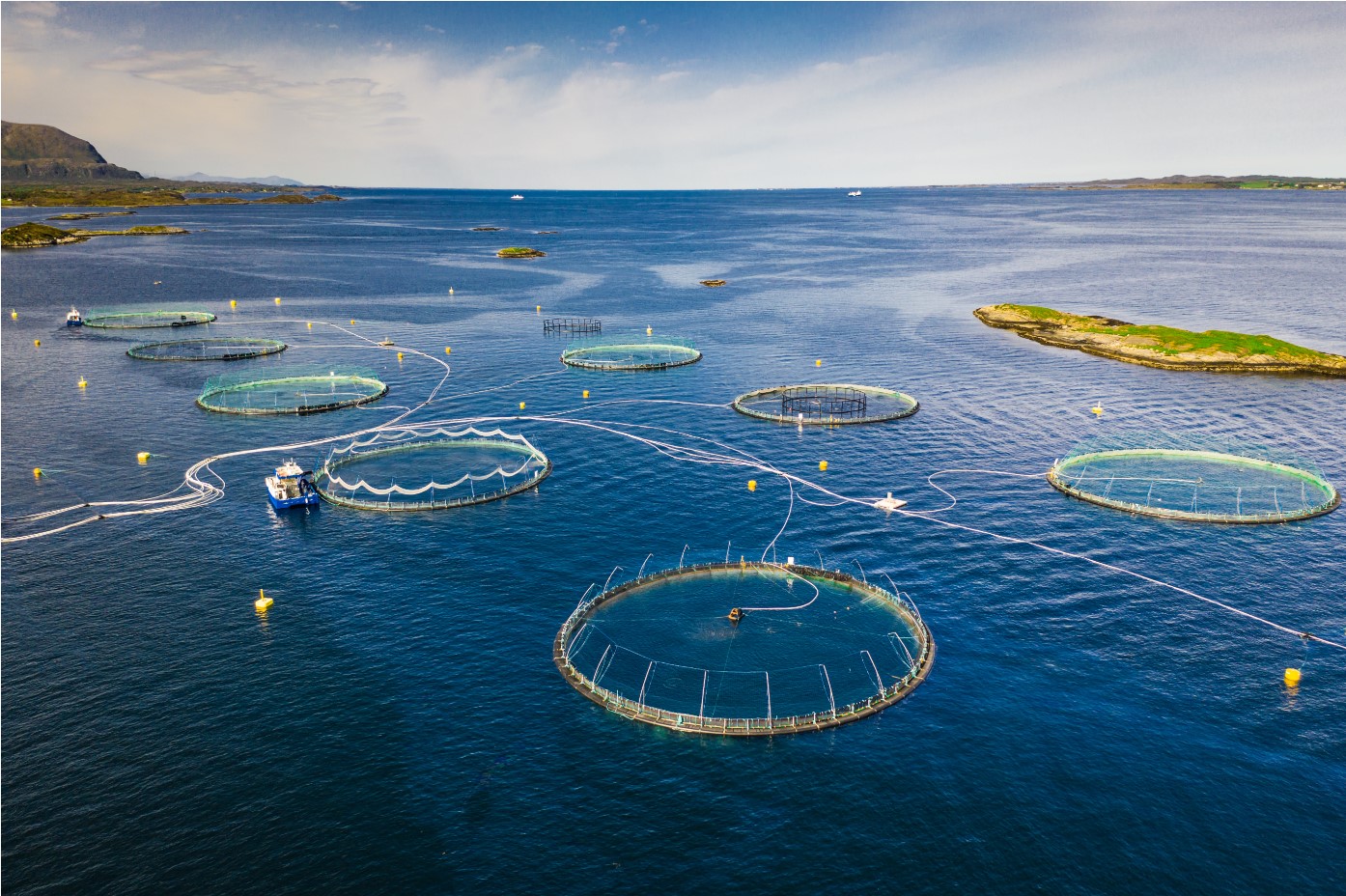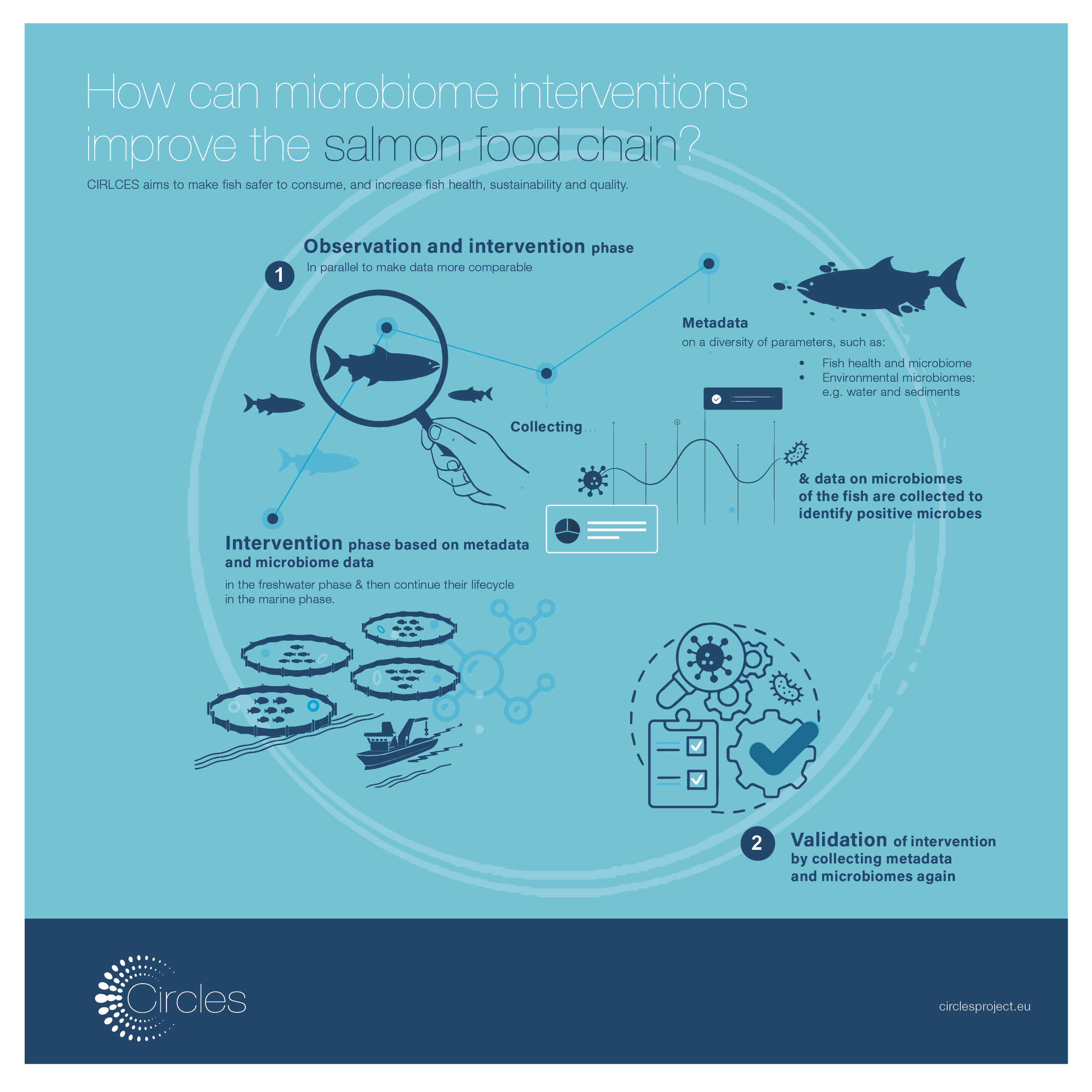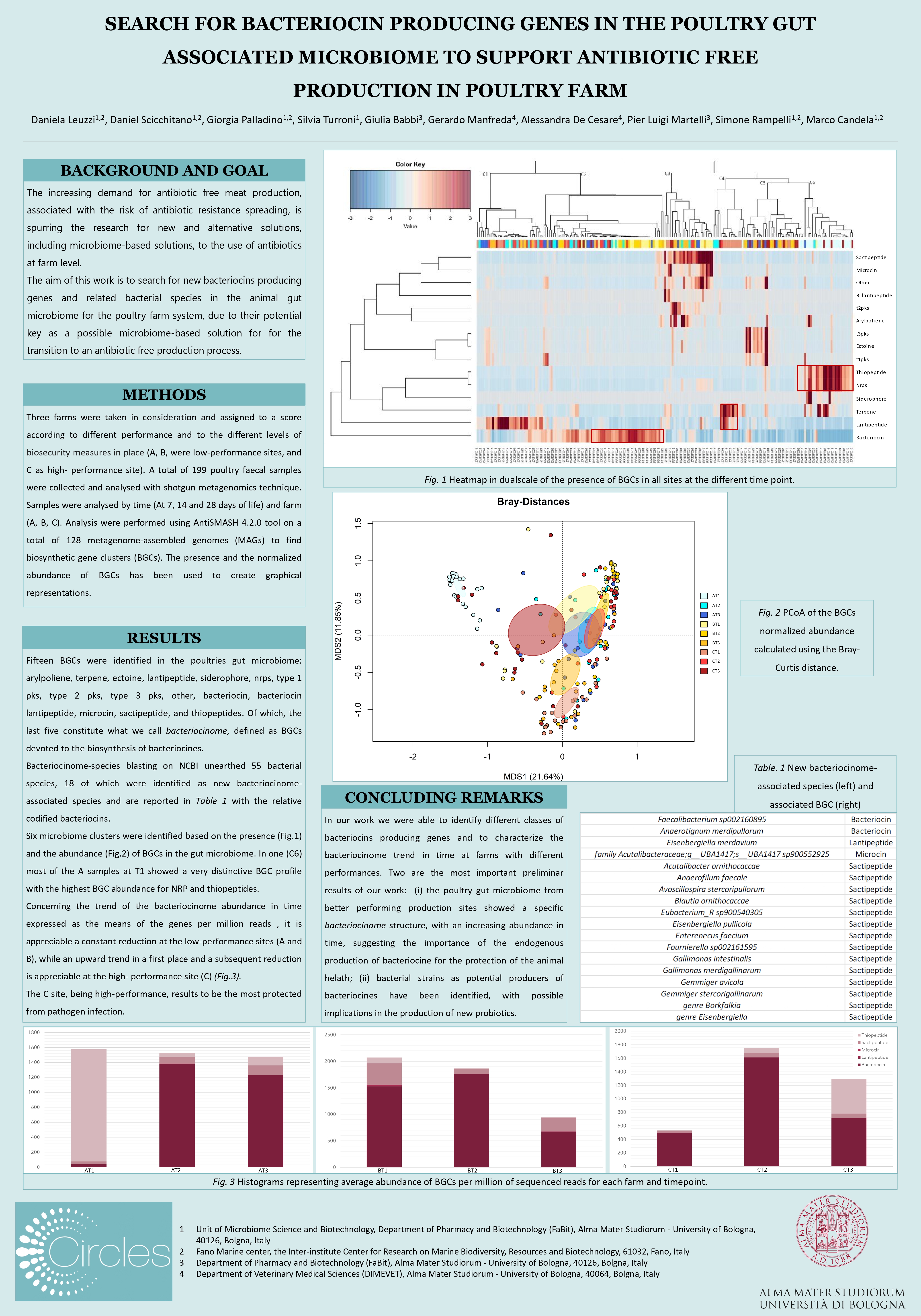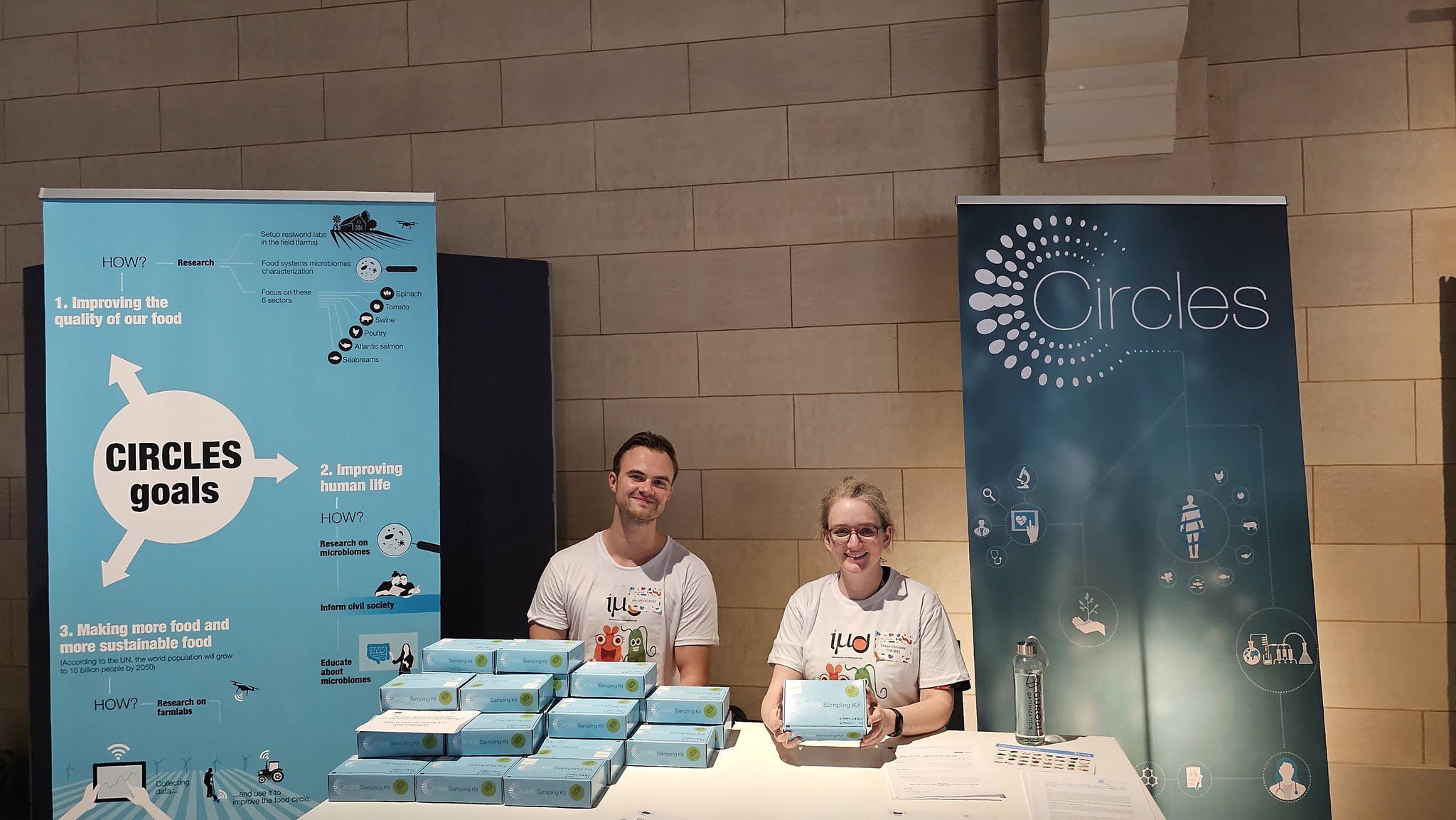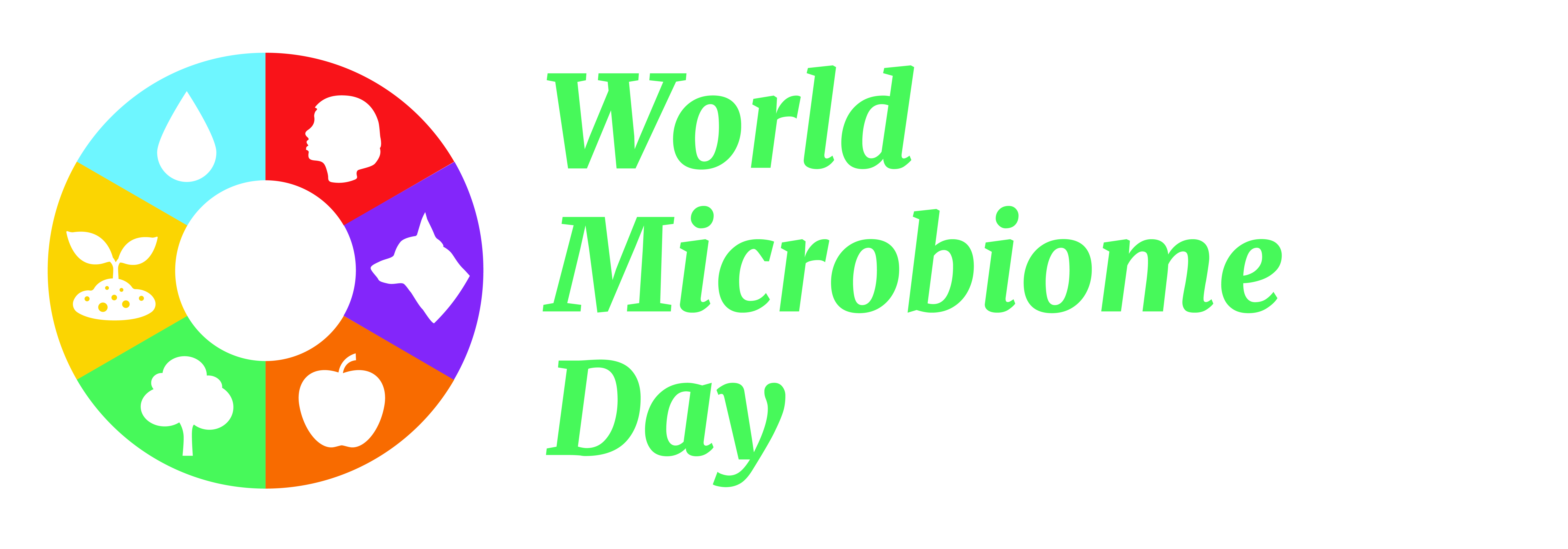By Arne Holst-Jensen – Norwegian Veterinary Institute
Long before the first human civilisation developed, microbial life had established advanced communities with many of the characteristics that we associate with civilisation. The most obvious are specialisation and task distribution, extensive collaboration and a range of effective communication systems. In two of the CIRCLES work packages we explore the impact of microbes on farmed and wild fish and their associated food chains.
Animals are adapted to co-exist with microbes specialised to inhabit skin, intestines, lungs/gills and all other organs/tissues exposed to the external environment. The roles of animal associated microorganisms are yet to be fully understood, but we know with certainty that they shape the immune system throughout life and play key roles in the digestion of foods and feeds. They also metabolize a wide range of other compounds ranging from potentially toxic dietary substances, via drugs to hormones in the body. Signal molecules produced by the microorganisms further provide for advanced communication with the host and other microorganisms.
Until recent, microorganisms were largely perceived negatively, as potential sources of diseases and food spoilage. Indeed, many microorganisms can be harmful and undesirable, at least in particular settings. Consequently, man has eradicated microorganisms on a large scale by use of detergents, antibiotics and sterilization of foods. This has had a dramatic impact on the presence, composition and development of human and domesticated animal associated microbial communities. Positive effects include significantly reduced prevalence and less severe outcomes of many infectious diseases. However, only recently have we started to appreciate the potentially negative side effects. Some of the putatively harmful microorganisms are only opportunistic pathogens and some even play important beneficial roles under particular conditions.
To make a metaphor with human communities, the elite has been so eager to get rid of the criminals that it has chased most of the population and neglected that the elite is totally dependent on a wide range of professions to live its elite life. In this metaphor, the CIRCLES project is about raising awareness within the elite and repopulate community with the necessary professionals.
The fish microbiome
Fish live in an environment with extreme exposure to microbes. As opposed to embryo development in a mammalian uterus or a bird’s shell-covered egg, the embryo developing from a fish egg is essentially bathing in a microbial soup. When hatched or borne the terrestrial vertebrates, as opposed to fish, have already developed relatively large bodies with protective barriers to prevent most of the body and organs from direct exposure to microorganisms. Their main exposure to microorganisms is through their diet and via skin contact, but airborne and respiratory exposure is important too. With access to a range of different environmental niches animals can vary and (unconsciously?) select what kind of microbial communities they are exposed to. Natural environments of terrestrial vertebrates can include different types of vegetation and soils, dry or wet, hot or cold, each with different microbial communities. Fish throughout their life-span swim in and drink a microbial soup that constantly passes over their respiratory organ, gills. Their options to find different environmental niches is more limited, and respiratory exposure is probably larger than for terrestrials.
Development of microbial communities through diet
To mature, the immune system of animals depend on exposure to microorganisms in early developmental stages. Lack of such exposure yields a high risk of immune system-associated diseases. Exposure to microbial communities that are very different from those that the ancestral animals’ immune systems and genes faced during evolution may lead to similar problems.
Intestinal microbial communities are shaped by diets. The diets of farmed animals today are often very different from the natural diets of their ancestral wild relatives. We can speculate but do not know to what extent the intestinal tract, including associated immune cells, has adapted to domesticated diets. Dietary ingredients that favour particular community types or specific microorganisms may be a means to modulate the microbial communities (pre-biotics).
We still lack sufficient knowledge and documentation to be able to distinguish between a truly beneficial and possibly harmful microbial community. Consider the inherent diversity within the relevant host species (e.g. salmon or broiler chickens), developmental/life stages (eggs, hatching, juveniles, young and fully grown adults), habitats and production systems (indoor or outdoor, caged or free moving), diets (unprocessed or processed, plant or animal based. Hardly any studies on animals have covered the span from earliest life stages to adulthood. Studies are needed not only in farming systems but also in (more) natural habitats with non- or semi-domesticated closest relatives to the domesticated animal species. This can provide knowledge on the correlation between animal health status and successional microbial community compositions, and shed light on the connection between microbial communities and evolutionary adaptations.
CIRCLES’ focus: wild and farmed salmon and sea bream
In the CIRCLES project we therefore combine research on wild and farmed fish from two different species, Atlantic salmon (Salmo salar) and Gilt head sea bream (Sparus aurata), and cover the life span from eggs to adulthood. This will contribute to close the gap in fundamental knowledge about the “normal” microbial communities of these species, and will inform fish farmers, feed producers, breeders and competent authorities who seek to optimise aquaculture based farming, wish to develop new products or ways to produce fish based foods, or safeguard health, foods and environments.
The two species salmon and sea bream are important in many ecosystems along the Atlantic and Mediterranean coasts, respectively. Atlantic salmon aquaculture is large scale with a long history of targeted breeding and is contrasted by a less industrialised and smaller scale production of sea bream. Based on data from previous studies we will introduce live microbial communities to salmon aquaculture production at a specific developmental stage and putative pre-biotic ingredients to sea bream aquaculture diets. We hypothesise that these interventions will have beneficial effects on the animal health and sustainability of the production systems without any adverse effects on animal welfare or food safety.
Data from the intervention studies will be matched against data from the wild fish and from farmed fish not exposed to the interventions, produced in parallel to the intervention studies. The results will improve our understanding and appreciation of microbial contributions to fish health and development and will be important for the further advancement of modern food production systems and aquaculture in particular, towards realisation of some of the UN’s sustainable development goals.
Future obstacles and needs
The major obstacle to repopulation of communities is the lack of certain knowledge. In the future we may face two other obstacles: legislation and public acceptance. Active introduction of microbial communities to food production systems is still controversial. The existing legislation build on the historical perception of microorganisms as undesirable and potentially harmful and therefore may deserve challenge. The complexity of microbe-host interactions and acknowledgement of opportunistic behaviour of some microorganisms, however, justifies a precautionary approach. History has also shown that failure to maintain an open dialogue with the public can compromise public perception of foods and production systems as safe, sustainable and in line with their ethic values. The public dialogue is therefore an essential and integral part of the CIRCLES project.
Image credits: BarbaraJackson via Pixabay and Stanislav via Adobe Stock


